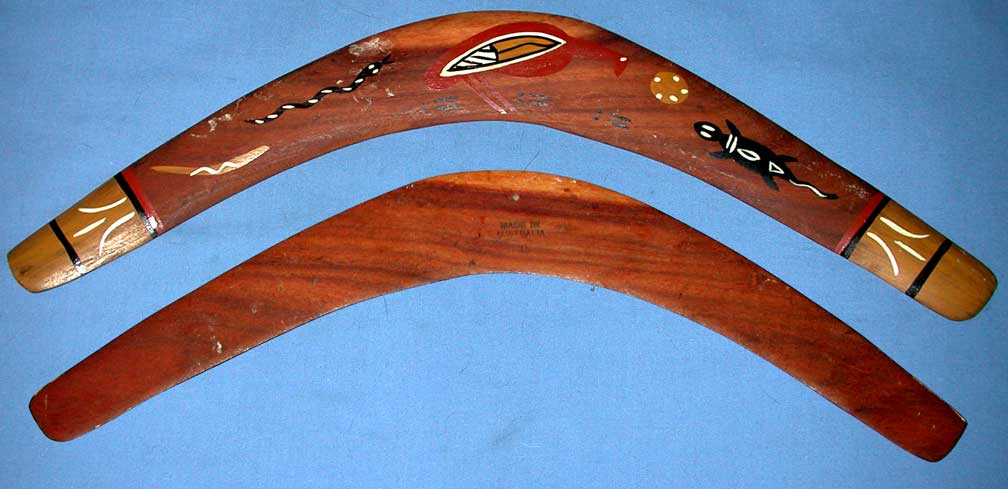Item TB159
This Item was Sold on 7 December
2008 for $53
Similar artifacts for sale are often found on the Aboriginal
Boomerangs web page.
Historical Pricing information for this item and similar artifacts
can be found at: Historical Artifact
Prices.
This returning style Australian Aboriginal boomerang was
acquired in New Caledonia by an American Serviceman during
World War II making this boomerang more than 60 years old.
It is made out of an attractive piece of dark hardwood and
is stamped on the reverse with " Made in Australia ". The
tips are squared off at the ends instead of rounded and this
is unusual for tourist style boomerangs. The upper surface
has Aboriginal art with an emu, serpent and goanna. There
are a couple of white ochre stains near the serpent head.
These can be sanded off or just left as is. This is probably
not a good returner, so it would be best displayed on the
wall. There is no damage, no dings or cracks. Except for
natural aging, it is in excellent condition. Span = 48 cm ;
Weight = 102 gm
Australian Aborigines are well known for making boomerangs.
The majority of the Aborigines had the technology to make
throwsticks, or non-returning boomerangs. Only a small
percentage of the tribal groups knew how to make true
returners and most of these came from the eastern coastal
regions of Queensland, New South Wales and Victoria. During
the past century, the majority of the Aborigines came out of
the bush and were somewhat assimilated into the European
man's culture. Many Aborigines began making returning style
boomerangs to sell to tourists. The earliest ones were well
made out of natural timber and with the grain following the
curvature of the boomerang. Today, most hardwood boomerang
are cut out of a large board and the grain is usually
straight and running parallel to a line spanning the tips of
the blades. Boomerangs that are made with the grain
following the contour of the blades are much stronger and
more valuable. In addition, some boomerangs have good
airfoiling. The majority do not. Most "tourist boomerangs"
have painted upper surfaces that display Australian animals
and decorative lines and/or geometric patterns. Most
pre-contact returners have no artwork or the artwork is
simple and scratched into the surface. It is easy to tell
the tourist boomerang from the valuable ethnographic
artifact. However, tourist boomerangs that are made properly
with the grain running along the contour and with good
airfoiling and art work do have good collectable value,
especially if they are made by a famous Aboriginal artists,
like Bill Onus or Joe Timbery.

How to Order | Back to: Aboriginal Boomerangs | Collectable Artifacts | Historical Artifact Prices | contact: Ted Bailey